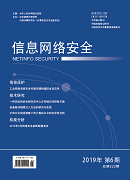Cloud storage is the best way to address the growing dilemma of data storage costs caused by explosive bursts of data. When users store data in the cloud, they lose the physical control of the data. Testing the integrity of the outsourced data is an urgent problem to be solved. This paper summarizes the advantages and disadvantages of existing data auditing protocols from three perspectives: Provable Data Possession (PDP), Proof of Retrievability (PoR) and Proof of Ownership (PoW), andevaluate the performance of a typical protocol from technical principle, time cost, reliability, detection probability and other indicators. The research finds that: Most audit protocols are only for specific scenarios, and the universal audit protocol for balancing performance in all aspects needs to be improved; the audit protocol matching the technologies such as cloud storage, fog storage, and blockchain is still in the process of exploration phase. Finally, we predict the future development trend of outsourcing data auditing methods from five aspects: cloud auditing protocol, alliance chain auditing protocol and component pool auditing protocol and so on.

